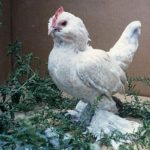
Nearly every chicken breed has a bantam version. But some bantam breeds have no larger counterpart. The latter are true bantams. Cackle Hatchery® offers the following true bantam chicken breeds: Belgian d’Anvers Belgian d’Anvers bantams get their name from the Belgian municipality of Antwerp, which is “Anvers” to the French. The word d’Anvers therefore means […]
Continue Reading
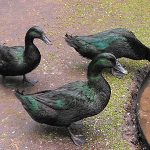
Mystery shrouds the origins of the Cayuga duck. Among the many legends, one claims the breed came from a pair of wild ducks in New York. Another claims the Cayuga derives from the ancient Black duck of Lancashire in the United Kingdom. Whatever the case, the duck gets its name from a Native American tribe […]
Continue Reading
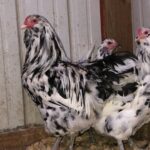
- Erminette Ameraucanas Chicken – Sold as Baby Chicks Only
Minimums – Not Sexed = 3
Total of 3 birds to ship
Seasonal/Shipped Early Feb thru Early August.
Limit of 15
Coming for the 2025 Season!
Continue Reading
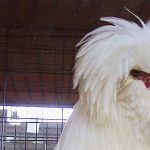
Chicken breeds with beards came about as a genetic mutation. Chicken keepers liked the appearance, and so they continued to breed more of the same. Other than the cuteness factor, scientists have yet to find any significant advantage or disadvantage to a beard on a chicken. A beard appears as elongated feathers growing beneath a […]
Continue Reading
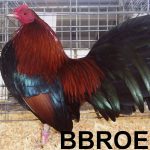
Chicken keepers often use abbreviations and assume their listeners know what they mean. Here are some of the more common chicken breed abbreviations, along with abbreviations for variety features and those used for show that may be puzzling when you see them in poultry publications, forums, and websites. Note that abbreviations may be combined to […]
Continue Reading
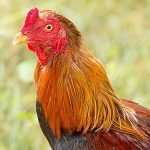
The Aseel chicken is an ancient game fowl from India. The name of this indigenous breed means trueborn or purebred. Aseels have an upright stance, square shanks, and short legs set wide apart. Their ears are red, and they have a pea comb and minimal wattles. These slow-growing chickens have well developed muscles, although their […]
Continue Reading
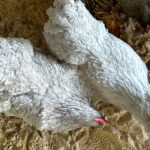
“The shredder gene in lavender chickens causes the feathers to split and the barbs to detach, resulting in rough looking feather development,” explains Jeff Smith of Cackle Hatchery®. Lavender, also known as self blue, is a plumage color resulting from an autosomal recessive gene. Let’s explore how it works. Lavender vs. Blue The lavender gene […]
Continue Reading
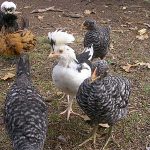
Like a lot of chicken keepers, you might want to include a variety of breeds in your backyard flock. Maybe you look forward to gathering baskets full of colorful eggs. Or, rather than all one breed of the same color and type, you prefer a more interesting variety of colors, sizes, and personalities. Or maybe […]
Continue Reading
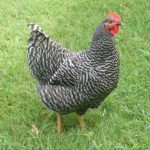
Some chicken breeds are more heat tolerant that others. They typically are lightweight breeds with large combs and wattles, sparse feathering, and clean legs. Other breeds are more cold hardy. They generally are the heavier breeds with tight combs, small wattles, and dense feathering. Some breeds, however, are able to handle both warm and cold […]
Continue Reading
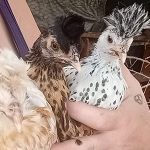
Spitzhauben chickens originate in the Appenzell district of Switzerland. They are therefore often called Appenzeller Spitzhaubens. The Swiss word spitzhauben refers to the breed’s crest of forward curving feathers, which remind Appenzell residents of their traditional lady’s bonnets. Near Extinction According to The Livestock Conservancy, Spitzhaubens have been known since the 16th century, kept in […]
Continue Reading










